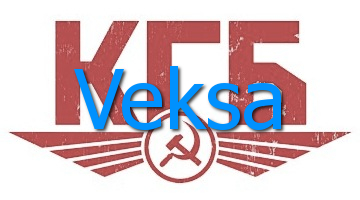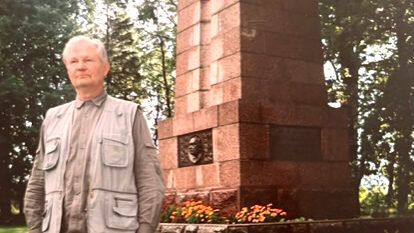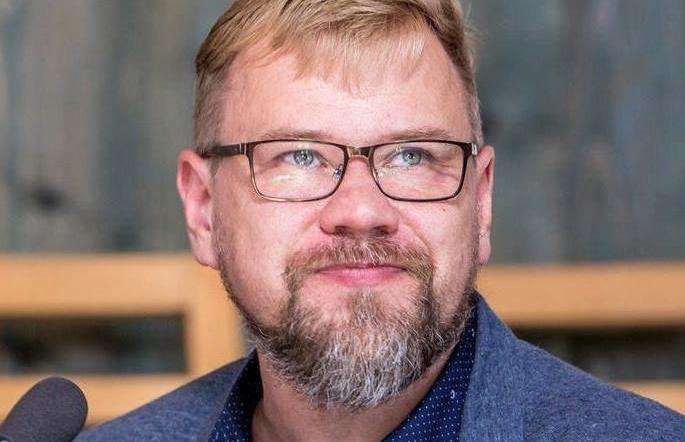The ‘talent spotters' were forced to be the Estonian writers, artists, musicians, etc. who were invited by VEKSA to be part of a ‘cultural exchange program' with exiles in Canada, USA, Sweden and elsewhere. They had to submit background descriptions of Estonians they would meet on these visits. This was mandatory, otherwise visits to the west would be cut off for them.
Supplementing the amateur ‘talent spotters' were the professionals, who practically always accompanied the groups of artistes. Ironically they were easy to ‘spot' by western counter-intelligence. They were career KGB officers, whose bona fides on their Canadian (or other) visa applications simply did not add up and their cover was easily spotted. Embedded in the cultural groups, they were often listed as ‘attaches' with the ministry of culture or carried some other innocuous title. They actually performed multiple duty on the trips, by keeping a watchful eye on the artistes themselves and by detecting any attempt at recruitment by western services. In addition to the KGB officials, each group usually had one or more KGB informants as fellow travelers, snitches, artistes like the others, who reported the transgressions of their colleagues. (In 1989, when the world-famous Estonian National Men's Choir visited Toronto, when Soviet repressions had eased significantly, when the aggressive stance against the exile community had practically disappeared, when VEKSA's demise was inevitable, travelling with the choir were two professionals KGBers and a few of their own co-opted singers – men who everyone knew as the snitches.)
A definitive answer as to who and in what numbers VEKSA managed to help co-opt ‘co-workers' abroad may never be given. Lists that would aid in this have been either destroyed, relocated or are never to be released. In February 1995 the Estonian parliament passed legislation, whereby individuals who do not voluntarily inform Estonian authorities of their employment or co-operation with the security, intelligence or counterintelligence services or military of the occupying foreign powers between 1940-1991 will have their identities revealed in the government publication ‘Riigiteataja' (equivalent to Canada's Parliamentary Hansard and the USA's Congressional Record). According to different sources some estimate that the government, specifically the Security Police (Kapo) has to date published some 650 names, others insist that the number is in the thousands. In any case the vast majority of individuals revealed were of Russian heritage, working for the KGB in a full time capacity. No agents, no exile Estonian co-workers. The latter were not included in the legislation, unless they had moved to Estonia. It is not part of the public record as to how many actually did inform the Security Police of their KGB background.
Both Latvia and Lithuanian have similar legislation and known former KGB officials who have not had a voluntary ‘chat' with the respective police authorities have been ‘outed'. This fall The Lithuanian Research Centre of Resistance and Genocide published the names and work related details of hundreds of former KGB operatives. These also included names of Lithuanian KGB reserve members. In some instances the term ‘reserve' in this context is the same as it is known in the west – an organized group who have had training and/or actual work experience and have joined a reserve unit (usually on a mandatory basis), ready to be called for duty when required – like in the military. But often the “KGB reserve' may also refer to agents, who have not been career KGB operatives. The Centre is also working on compiling a list of Lithuanian secret co-workers of the KGB for publication. The KGB in Lithuania were not able to destroy or relocate as much of the archival material as in Estonia and Latvia.
The Centre this fall also stated that the head of Lithuania's criminal police service, Algirdas Matonis, has not revealed his KGB past. According to documents uncovered by the Centre, Matonis' relationship with the KGB started in the perestroika years, during a time when subjects were no longer coerced into co-operation. Matonis, who has headed the criminal section since 2005, entered into a KGB relationship of his own free will, the Centre emphasized.
Birute Buraskaite, the director general of the Centre stated that KGB agents had a negative influence on society which may still be situation today. (Here one is reminded that in the Baltic states, the KGB was also universally known as the ‘forces of repression' – repressiiv organid.) Agents/informants could not perform the duties then without KGB interference because they were connected, and still might be today. In their recruitment it was blackmail, use of compromising information against them, help in climbing the promotion ladder in their non-KGB careers that typically assured agreement from the approached potential agent. But, Buraskaite said, they all still had the choice of choosing personal integrity and a clear conscious. It was generally known that KGB threats during recruitment were often hollow.
Laas Leivat – Estonian Life No. 45 2012
In previous articles it has been stated that all who traveled to the West under the auspices of VEKSA were obliged to submit reports of everyone with whom they were in contact. Ostensibly this would fulfill one requirement to be approved the next time they applied for another trip to the west. It was obvious that these reports would help the KGB in the future in their possible efforts at recruiting.
(LL has read many of these ‘talent spotting' reports and their overall effectiveness in assisting KGB recruiters is questionable. Some reports consist of a small list of exile Estonians in the West, some with very little additional information. A few are more thorough, describing personal weaknesses and vulnerabilities such as alcohol use, marital or financial problems that could be exploited. LL in talking to some who did submit the reports, were led to believe the reports were used by the KGB to determine who amongst those exiles visited may have been working for Western intelligence services.)
It has also been stated previously that it is practically impossible to assess the value that can be placed on the reports submitted. Files containing information about the first chief directorate in Estonia (foreign intelligence) started to be relocated to Uljanovsk in 1989, shortly after the mass demonstrations in Georgia. These files presumably would give some indication as to who was recruited. Even though the3 files refer to the recruited agents by cover names only, a description of activities would pinpoint the actual individual in the West. Some 60 files remained in Estonia upon the re-establishment of Estonia's independence in 1991. However the foreign intelligence section of the KGB archives in Lithuania was not depleted to the same extent as in Estonia and 860 files, mostly from the 1960s to the 1980s, were left behind, later to be studied bv Lithuanian historians and the late Indrek Jürjo.
Read the paper sheet No. 46 2012




